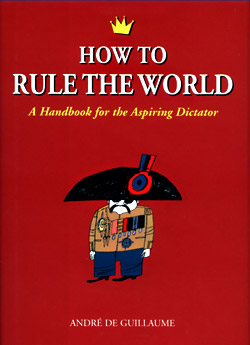THE CORONER who attended Robert Kennedy’s corpse determined that the fatal shot had been fired into the back of his head from a distance of no more than three inches, though Sirhan Sirhan had been standing in front of his target. In addition, photographic evidence and Los Angeles Police Department records show that a total of 13 shots were fired, though Sirhan’s pistol held only eight rounds. So why was forensic evidence destroyed after Sirhan’s trial? And why, despite the prior assassination of his brother and numerous death threats, was RFK protected only by an amateurish security firm?
Rough Guides, the same people who bring you snappy, irreverent travel guides and tasty compilation CDs (The Rough Guide to Tex-Mex) wade into this morass in The Rough Guide to Conspiracy Theories ($14.99) by James McConnachie and Robin Tudge. Their conclusion, as in so many of the other cases they take up, from the Masons to Vincent Foster, is along the lines of, “Gosh, with all this conflicting information, we may never know for sure!”
It would be too much to expect Rough Guides to settle every conspiracy once and for all, especially with the demands of preparing volume two of The Rough Guide to Astor Piazzolla. And, to be fair, McConnachie and Tudge are unequivocal about a few things that are beyond doubt (one chapter is called “Iran-Contra: No theory”). But too often legitimate theories are lazily lumped in with all the crazy ones—most importantly in the case that no conspiracy guide worthy of the name can afford to flub, that other Kennedy assassination.
I’ll admit I’m a little sensitive on the JFK thing, being a full-fledged adherent of the mob hit theory (read Fatal Hour by G. Robert Blakey and tell me I’m crazy). It’s not that I demand that the authors endorse my theory of choice (though it’s kind of a no-brainer), only that they give it the time of day. The mob hit idea gets two paragraphs and is conflated with another, entirely baseless theory (that the mob did it in collusion with J. Edgar Hoover and the Ku Klux Klan). “And so the debate continues,” the authors weakly conclude, having done nothing to clarify this debate by at least weeding out the obviously insane theories. Would it be too much, for example, for them to declare Oliver Stone’s JFK pure fantasy? As People magazine might put it: “too rough, not enough guidance.”
BY CONTRAST,in his satirical self-help book, How to Rule the World: A Handbook for the Aspiring Dictator (Chicago Review, $9.95), André de Guillaume focuses with laser wit not on the murky, serpentine ways that people might hypothetically have taken power, but on the brutal, direct ways they actually have. He offers motivational tips drawn from the lives of Mao, Hitler, and Robert Mugabe, in a tone that might be called tongue-in-cheek if it weren’t so disturbingly well maintained for the book’s entire length. It’s funny all right, and perfectly complemented by Robin Chevalier’s razor-sharp illustrations of dictators getting dressed in the morning and lounging around with their harems, but at 140 fluffy pages it’s more of a good bathroom read than anything else. Not that there’s anything wrong with that.
One piece of advice de Guillaume (actually a pseudonym for Australian editor Andrew Wilkins) offers to the power hungry is to “develop the odd eccentricity to distract people from what you are really up to.” A funny hat or amusing mustache, for instance, or maybe an enormous pair of trousers. Another suggestion is to have one big idea. Something simple. Something you could put on a billboard. Emperor Constantine’s big idea was, “Everyone’s got to be a Christian—now,” while Vlad the Impaler went with the old standby: “Everyone I don’t like should die.”
It’s when you realize that this kind of big idea is just as effective even now—who can forget the classic “Vote for me, or terrorists will kill you”?—that some of the fun goes out of this book. And that’s the problem with both of these books, really: Conspiracy theories and coups are just not the same crackin’ good entertainment that they used to be. What with all the, you know, torture and war and stuff going on. But, given the naked state of the executive power grab going on in our own country, de Guillaume does seem a bit more to the point than the conspiracy crowd. Indirect means? Closed-door plots? If only Bush and Cheney were that subtle.








